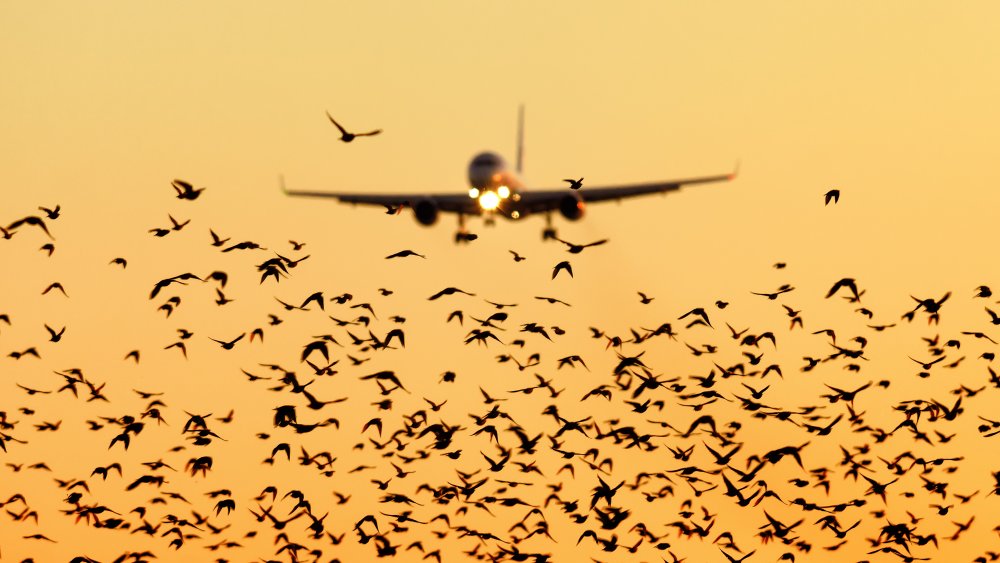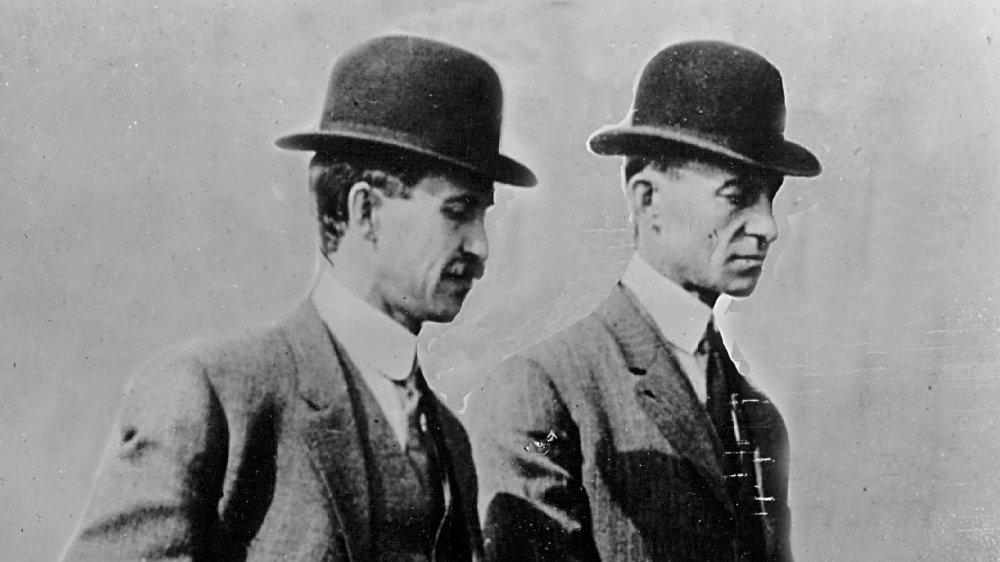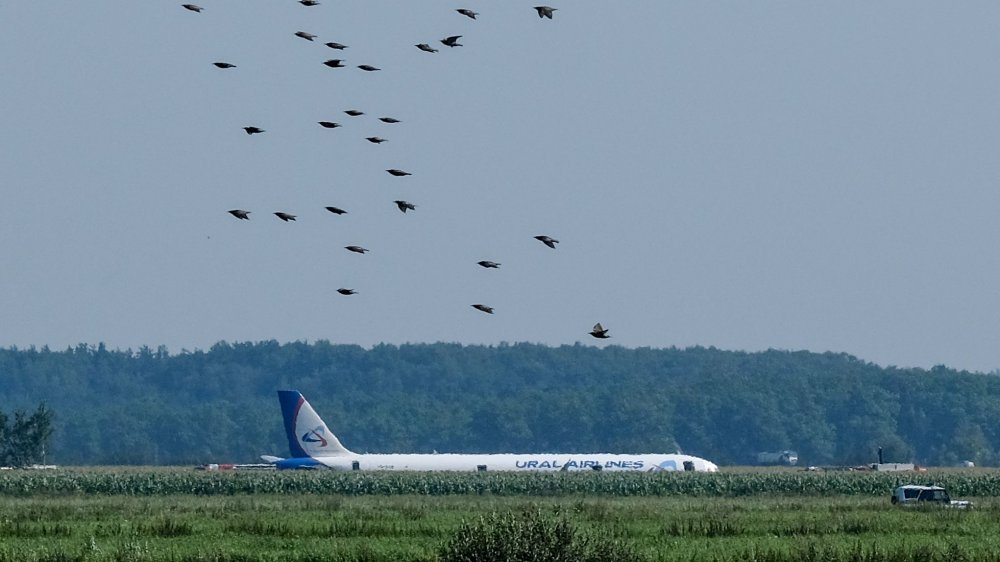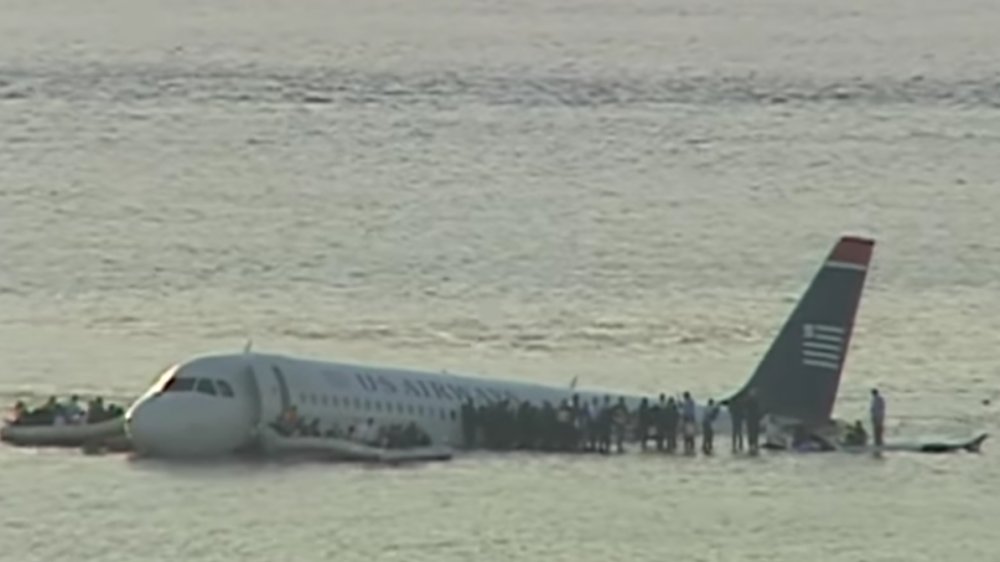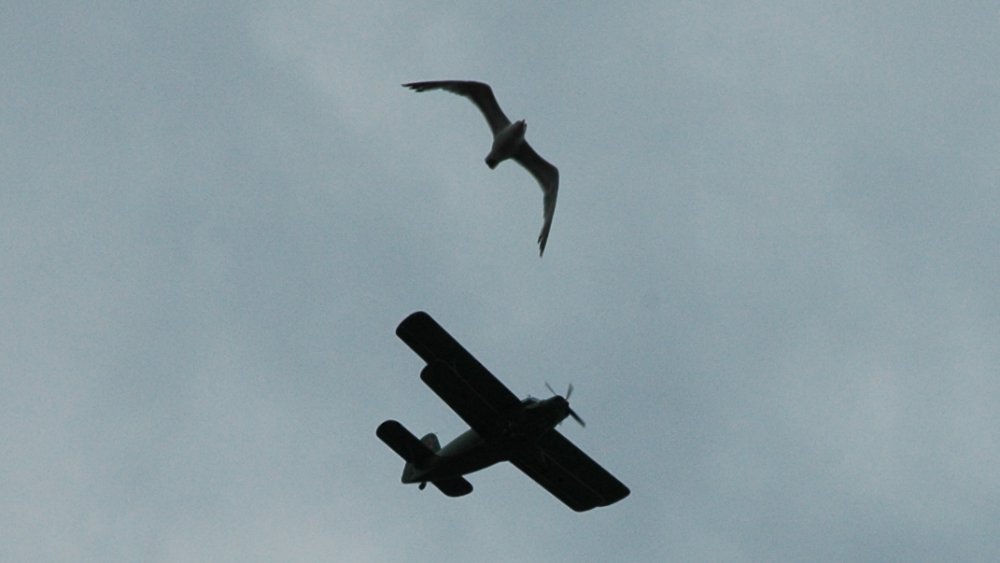What Really Happens When Birds Fly Into A Plane Engine
The US Navy's E-6B Mercury aircraft is built to tolerate a nuclear blast, according to LiveScience. Dubbed the "doomsday plane," the aircraft was designed by Boeing, which is significantly less reassuring than its apocalyptic moniker. Much more worrisome is the fact that this state-of-the-art plane which can supposedly hold up during a nuclear strike can't even take a bird strike. In 2019, a Mercury almost met its maker when a bird knocked out one of its four engines, causing $2 million in damage. The Navy Times reports that this was just "one of five class A mishaps involving a bird strike in the last decade."
Given Boeing's highly publicized problems with the 737 Max, you might assume its aircraft are attracted to the ground. But bird strikes don't limit themselves to a single troubled company. Per USA Today, in 2018, planes crashed into more than 40 birds per day, tying a record set in the previous year. LiveScience writes that more than 200 people have died from such collisions since 1988. Obviously, these incidents have spelled doom for thousands of birds as well. Worse, the rate of reported strikes has steadily increased during that time. So what exactly happens when one of those poor feathered souls soars into a plane engine?
In the wrong place at the Wright time
Birds have been colliding with planes for nearly as long as planes have occupied the skies. Brothers Wilbur and Orville Wright propelled themselves to legendary heights in 1903 by achieving the first ever successful flight of a controlled, powered, heavier-than-air plane, per History. This first date with destiny took place 852 feet in the air and lasted all of 52 seconds, not nearly enough time to butt heads with a bird. But in 1905 airplanes really got off the ground when the Wright brothers took to the skies in the "first fully practical plane." Perhaps not so coincidentally, that same year witnessed the first documented bird strike.
On second thought, it might be more accurate to characterize the incident as a plane strike. HistoryNet writes that the Wright brothers' diaries recount an instance in which Orville chased flocks of birds. When all was said and done, one unlucky bird was done for. Orville saw its lifeless body lying on one of his plane's wings. The first person to perish as the result of a bird strike was Cal Rodgers. In 1912, a seagull sealed his fate when it slammed into his plane and became trapped in the control cables. Unable to control the aircraft, Rogers crashed into the Pacific Ocean.
It's a bird, it's a plane, it's a bird hitting a plane
Despite the size difference, birds can have a devastating impact on a plane. Per LiveScience, "A 12-pound Canada goose striking an aircraft going 150 mph at lift-off generates the force of a 1,000-pound weight dropped from a height of 10 feet." However, as of 2009, planes were only certified to withstand the impact of a four-pound bird. That inherently spells trouble for aircraft traveling in North America, where 36 bird species exceed four pounds. But instead of paying an overweight baggage fee, these plump fliers can wreck engine.
The front portions of plane engines contain a bunch of compressor blades, which you might expect to slice a bird like a hot knife through chicken. But Purdue University professor of aviation technology Dale Oderman explained that the blades "aren't very big and they can be very easily damaged." All it takes is a single blade to break for all hell to break loose. In Oderman's words, "one blade will go through the rest of the engine and it's like shrapnel to the engine."
Where there's smoke, there's flier
January 2009 changed the way the FAA and airports approach bird strikes. When US Airways flight 1549 departed from LaGuardia Airport, nobody on board expected their trip to turn into a future Tom Hanks film. Yet as USA Today details, the flight encountered grave danger at 3,000 feet. Smoke and fear flooded the cabin after a grisly collision with a flock of Canada geese. Ignoring gravity wasn't an option. Luckily, Captain Chesley "Sully" Sullenberger had the poise and piloting ability to safely land the plane on the Hudson River. All 155 passengers made it out alive in what has been hailed as the "Miracle on the Hudson." Though, for the geese it was more of a mangling in the Hudson. Since the incident, the FAA has moved to improve its voluntary reporting system.
Air on the side of caution
According to Forbes, in the aftermath of Sully's heroics, airports upped their wildlife management game to lower the chances of a bird strike occurring during takeoff or landing. In New York, they try to keep birds at bay with tall grasses and foul-tasting fungus. Furthermore, the fact that planes are painted white helps cut down on collisions at least somewhat because of increased visibility. However, the higher you get in the air, the less control man has over bird traffic. As a result, there has been a rise in the number of bird strikes. However, the number that inflict damage to aircraft has dropped. Despite that positive change, bird strikes remain "an unsolved danger," especially if a bird strikes a doomsday plane.
